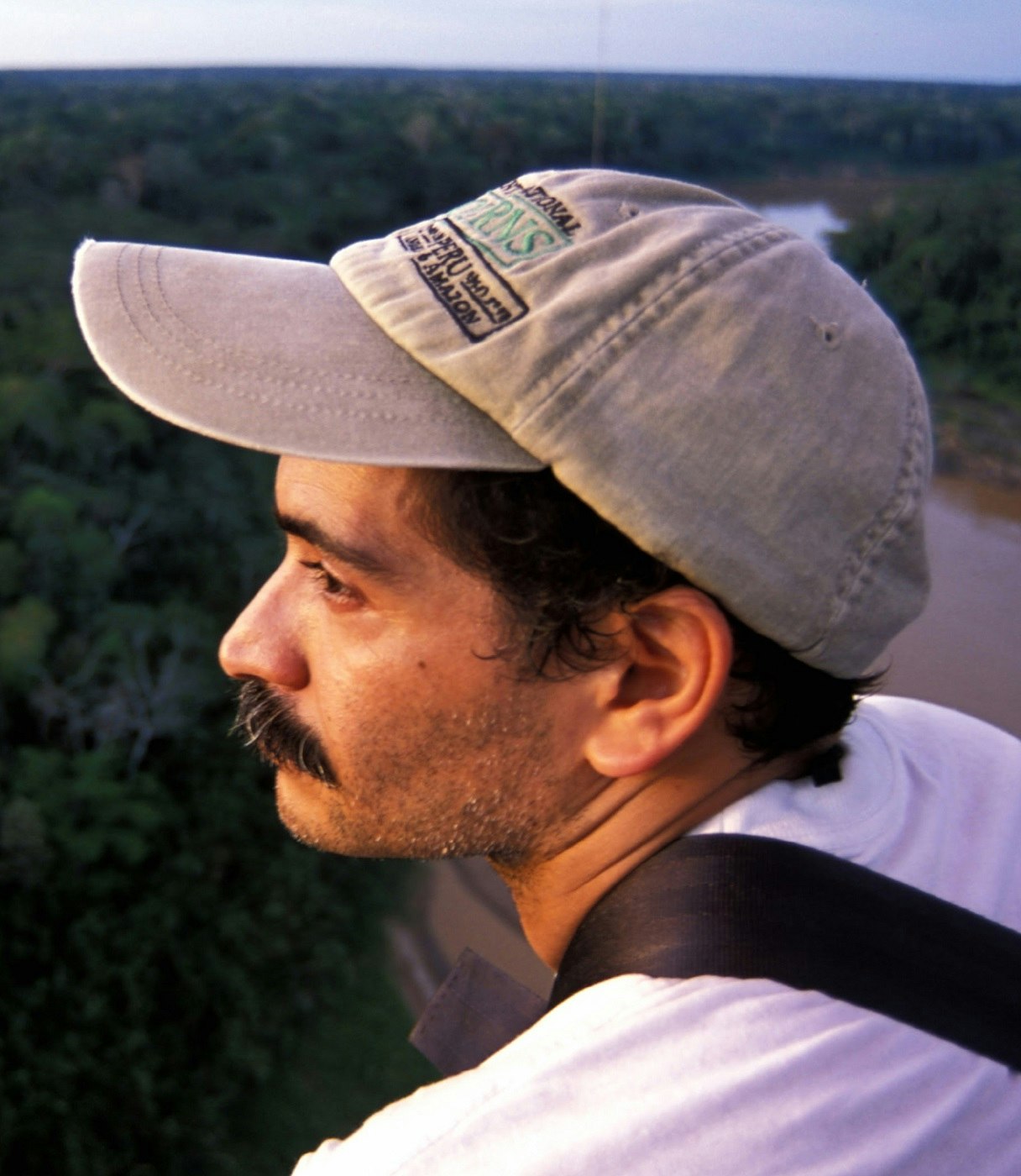Ecosystem approach to conservation of Amazonian headwaters, Tambopata River, Peru
The heavily forested Tambopata river basin in southeast Peru is a headwater of the Madeira River, the largest Amazon tributary. Long seen as one of Peru’s last great wildernesses, these headwaters are now under threat on an unprecedented scale. Four hydro-electric dams will be built downstream, causing migratory fish extinctions. The Interoceanic Highway that will stretch from Peru’s west coast to east coast of Brazil is being paved across fragile mountain forests. Climbing prices of gold and oil are fuelling a ravaging extractive fever. Faced with such threats, traditional, species-centred approaches to conservation are insufficient to provide effective answers.
Peruvian conservationist, Ernesto Ráez-Luna, 45, has worked on conservation of upper Madeira since 1985. He coordinates the Working Group for the Interoceanic Highway, a collective of 50 NGOs concerned for how this tide of development will impact local livelihoods. Ernesto is drawing international attention to the plight of the Madeira as a global ecosystem.
He is bringing local communities and regional authorities together to work towards a sustainable land-use plan for the upper and lower Tambopata. As the basin falls across two different Peruvian administrations, this is an ambitious approach to regional development planning and budgeting that has not been attempted in Peru before.
In the lower basin, streams and lakes threatened by gold miners will be protected, whilst in the upper basin, small coffee and citrus growers will be trained in watershed-friendly farming methods.
A key role of the team will be to resolve conflict between local communities and the Park administration, providing technical advice and workshops to build consensus for development planning. Above all, Ernesto is drawing attention to the explicit links between river basins and human health and livelihoods. His goal is to build a shared vision that is not anti-development, but which mitigates the enormous threats overtaking one of the world’s most important and life-supporting ecosystems.








